
The July 2025 wave of Agile Market Intelligence’s Consumer Pulse shows financial sentiment has stabilised, with few signs of recovery. Anxiety remains widespread, financial improvement is rare, but household cashflow is stable. The divide between debt-stressed and debt-free households continues to grow.
Key stats you need to know
- 23% of Australians say their financial position has improved compared to 12 months ago.
- Financial anxiety affects 41% of Australians with consumer debt, compared to 27% of those who are debt free.
- One in three Australians report having positive cashflow, compared to only one in five with negative cashflow; unemployed respondents are feeling the pinch with 38% reporting negative cashflow
Debt is a key factor for financial anxiety
- Financial anxiety affects one in three Australians (32%) in July, almost unchanged since June.
- Among consumer debt holders, anxiety sits at 41%, significantly more than of debt-free households (27%).
- Mortgage holders report lower levels of anxiety at 26%, while retirees remain the most financially secure (25%).
Anxiety levels are no longer rising but have failed to improve, especially for those carrying personal debt or outside the labour force. Unemployed Australians show the highest levels of distress, with 59% reporting anxiety. The persistence of high anxiety signals continued strain despite broader economic stability. Secure sentiment is strongest among debt-free consumers and employed adults, but flat month-on-month.
“We’re seeing a split consumer landscape—while some households hold steady, others are stuck in a cycle of debt and distress,” said Michael Johnson, Director at Agile Market Intelligence. “Debt remains one of the most reliable indicators of financial anxiety.”
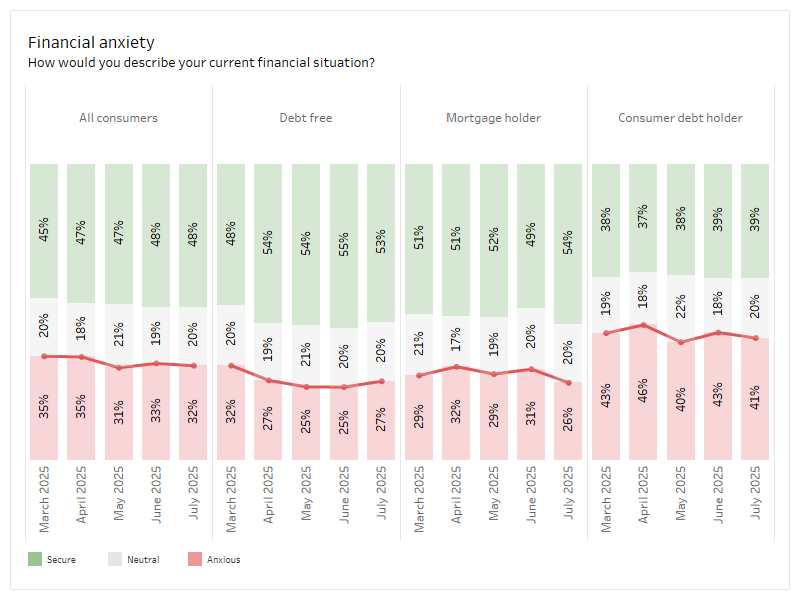
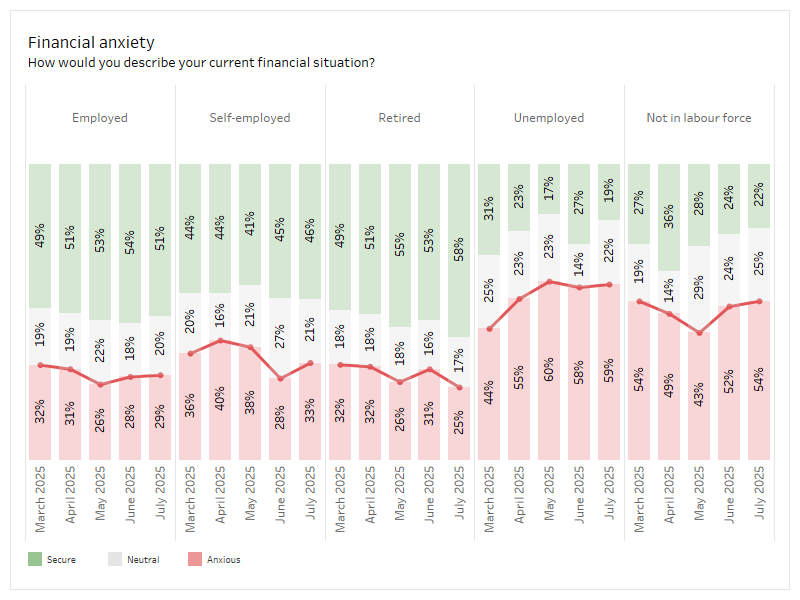
Financial health shows no meaningful recovery
- Only 23% of Australians say their financial health has improved over the past 12 months.
- 35% say they are worse off, while 42% say there has been no change.
- Consumer debt holders are most pessimistic, with 40% saying their situation has worsened, while over half (52%) of unemployed Australians also say they are worse off than a year ago.
Perceptions of financial health remain subdued, with improvement limited and pessimism persistent. The trend points to stagnation rather than recovery, particularly among indebted and unemployed segments. Meanwhile, debt-free households are more likely to report stability, with only 33% saying they’re worse off.
“When nearly half the population reports no change and only a fifth see improvement, it's clear the recovery narrative hasn’t reached most households,” said Michael Johnson. “For those in financial distress, the past year has offered little relief. However, it does appear that the trends are moving in a slightly more positive direction.”
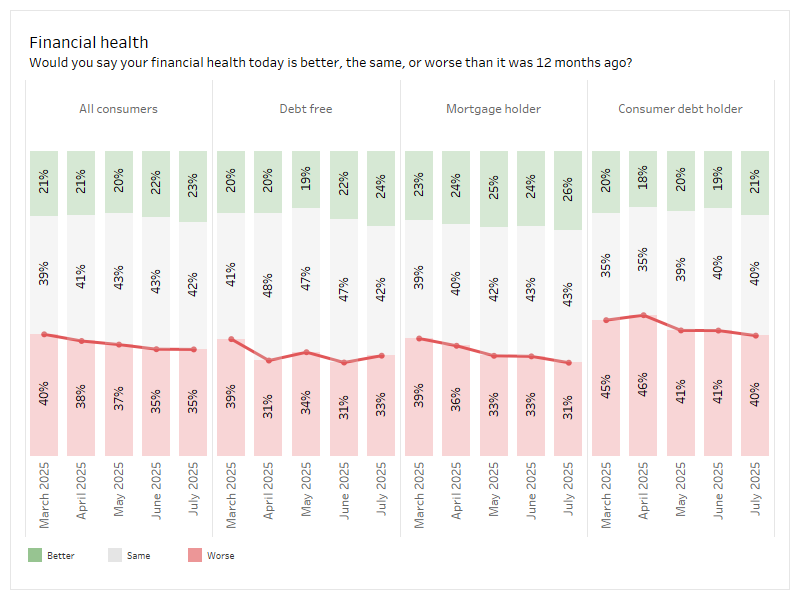
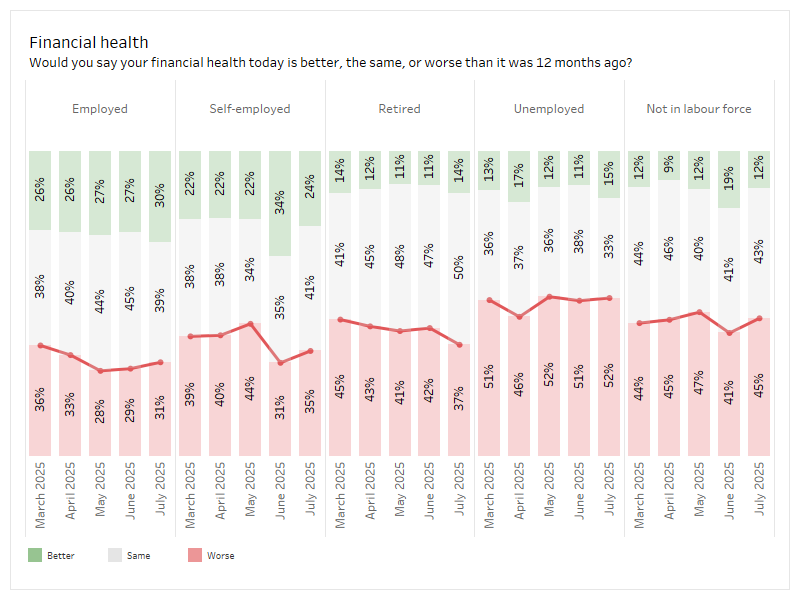
Cashflow stability holds steady for most, but pressure points remain
- 33% of Australians reported being in a positive cashflow position in July, compared to 20% in negative. Debt-free households are far more stable, with only 15% in negative cashflow and 35% in positive.
- Consumer debt holders remain the most cashflow-constrained, with 26% in deficit and just 27% in surplus. Mortgage holders show moderate resilience, with 19% in negative and 37% in positive cashflow.
While overall cashflow has not worsened, the underlying picture reveals significant vulnerability among indebted and low-income consumers. Unemployed Australians continue to struggle: 38% are in deficit and just 12% in surplus. The current environment is holding steady (but not improving) for many Australians.
“We’re seeing a plateau in household cashflow, but not a rebound. The question now is how long vulnerable groups can maintain this fragile equilibrium,” said Michael Johnson.
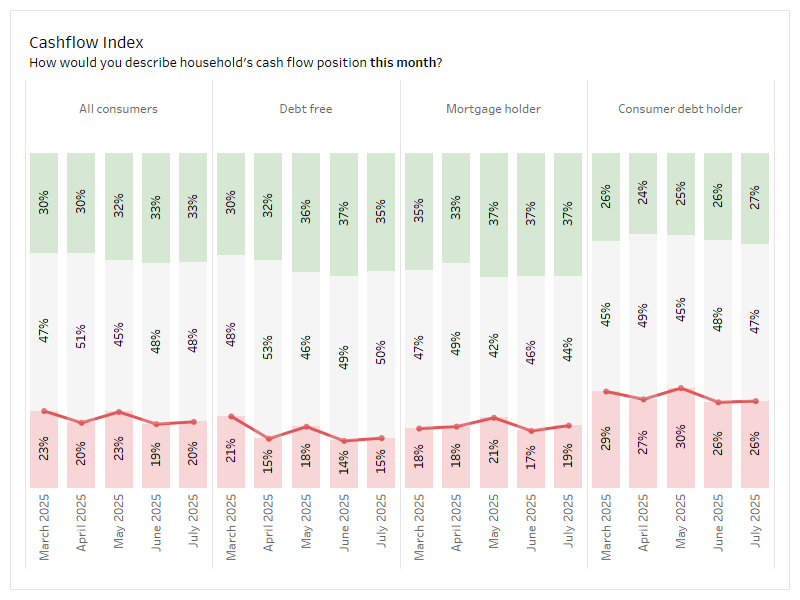
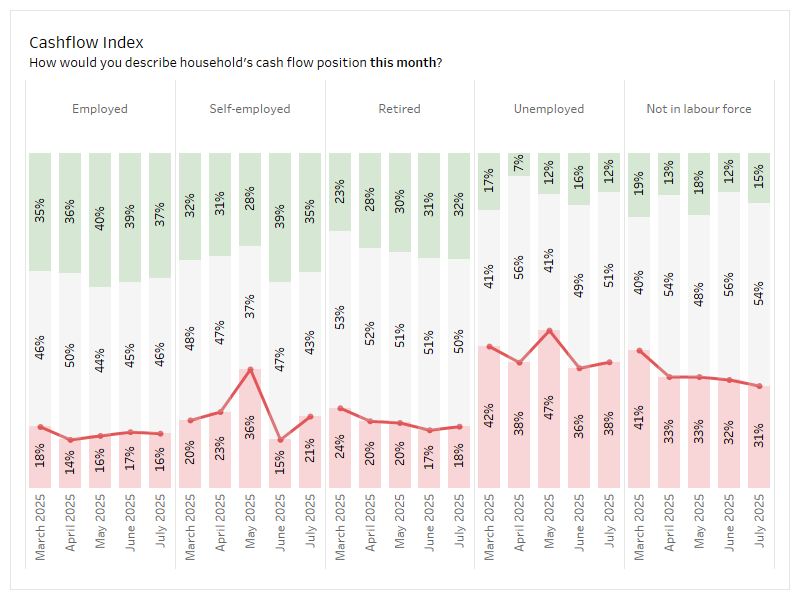
About the research
This article is based on findings from Agile Market Intelligence’s Consumer Pulse survey, conducted across March to July 2025. The survey collected responses from 7,469 Australian consumers. Results were weighted to reflect national population profiles by age, gender, and state.
The Consumer Pulse is a monthly tracker of over 1,500 Australian consumers developed by Agile Market Intelligence to monitor consumer sentiment, financial stress, and behavioural shifts across key household segments. The survey provides a real-time view of financial wellbeing in Australia, segmented by debt status and home ownership.


